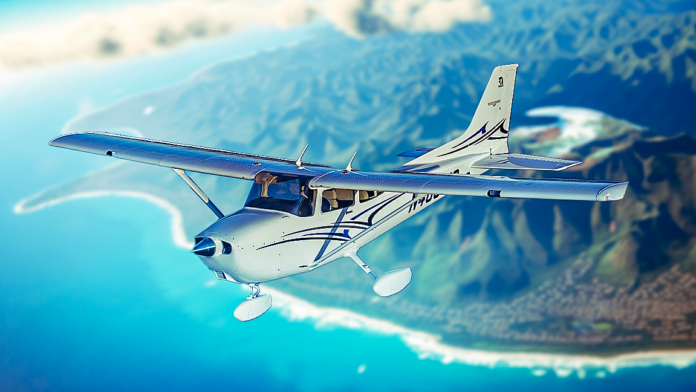The Cessna 172 Skyhawk is famous for being the most-produced aircraft of all time, with over 45,000 airframes built since the first rolled off the production line in 1956. This legendary general aviation light aircraft will go down in history as one of the most reliable, efficient, and versatile planes ever built, capable of performing all kinds of roles.
Interestingly, despite major advancements in technology and design since the 172 was released, the plane’s cruise speed hasn’t changed too much over the decades. Instead, upgrades to the aircraft have tended to boost its reliability, avionics, and safety. Nonetheless, modern Cessna 172 models are still almost 20% faster than the original, so some improvements have been made in this department.
Cessna 172 cruise speed
The current in-production model of the 172 series is the Cessna 172S Skyhawk SP, offering modern upgrades like a glass cockpit, Garmin G1000 NXi avionics suite and a 180-horsepower Lycoming IO-360-L2A engine. Compared to the previous model, the 172R, the 172S features an additional 20HP, and the Garmin G1000 suite comes as standard, among other tweaks.
Photo: Irina Leoni | Shutterstock
As per Textron Aviation, the aircraft’s maximum cruise speed is 124 knots (142 mph or 230 km/h), with a maximum range of 640 NM (1,185 km) and a climb rate of up to 730 fpm. However, this range can change depending on engine power, altitude, and weight of aircraft.
Discover more aviation news with Simple Flying.
Modest speed increases
As mentioned earlier, the Skyhawk’s cruise speed has risen modestly over the decades, but improvements haven’t been dramatic given the limitations of a single-engine piston aircraft. The first Cessna 172 model was fitted with a 145HP Continental O-300 engine before an upgrade to the Lycoming O-320 around a decade later.
According to172guide, the first Cessna 172 had a cruise speed of 108 knots (132 mph or 212 km/h), which was gradually increased in future iterations:
172C (1962): Continental O-300-C – 114 knots at 7,000 ft altitude
(1962): Continental O-300-C – 114 knots at 7,000 ft altitude 172I (1968): Lycoming O-320-E2D – 114 knots at 9,000 ft altitude
(1968): Lycoming O-320-E2D – 114 knots at 9,000 ft altitude 172N (1979): Lycoming O-320-H2AD – 122 knots at 8,000 ft altitude
Let’s compare some of the specs of the first Cessna 172 with the in-production 172S:
Specs Cessna 172 Cessna 172S Engine Continental O-300 Lycoming IO-360-L2A Horsepower 150 180 Cruise speed 108 knots 124 knots Rate of climb 660 fpm 720 fpm Fuel capacity 56 gallons 39 gallons Service ceiling 15,100 ft 13,500 ft
Against the competition
The 172 is well ahead of other trainers in terms of aircraft built and sold. However, when looking at its specs compared to those of its rivals, it doesn’t outshine them in all departments. In fact, if we look at cruise speed alone (at 75% engine power), it is sometimes slightly slower than most of its counterparts.
Piper PA-28 Cherokee
Take the Piper PA-28 Cherokee, for example, which is generally considered the main rival to the Cessna 172 series. Entering service in the early 1960s, the PA-28 initially offered a higher cruise speed of over 120 knots, although the current in-production Piper’s have a similar cruise speed to the Cessna 172S.
Photo: Igor Grochev I Shutterstock
Diamond DA40
The Diamond DA40 is, without a doubt, a faster aircraft than the 172, with an initial cruise speed of 145 knots when it came out in 1997. The most up-to-date variant – the DA40 NG – is powered by a 168 hp Austro Engine AE300, which offers a cruise speed of 154 knots, as well as a higher service ceiling of 16,000ft.
Beechcraft Musketeer
The Beechcraft Musketeer is another popular trainer aircraft and one of the few that is slower than the 172. Take the Beechcraft Musketeer Sport II, for example, which has a cruise speed of 108 knots, well below the 172S’ 124 knots, or the Musketeer Custom II, which offers a cruise speed of 102 knots.
Comparing the 172 and 182
Simple Flying recently took a deep dive intothe differences between the 172 Skyhawk and the larger Cessna 182 Skylane, another popular trainer and general aviation aircraft. The Skylane is Cessna’s second most popular aircraft still in production behind the 172 and a feasible alternative for flight schools and private owners.
Photo: Textron
The 182 features a more powerful Lycoming IO-540-AB1A5 engine, giving it a cruise speed of 145 knots – on top of this, its extra fuel capacity gives it almost 50% more range than the 172 at 930 NM.
A training favorite
The Cessna 172’s ease of operation makes it a clear favorite for student pilots, and you can find a Cessna 172 at just about every flight school in the world. Cessna estimates an average of 75 flight hours to earn a private license.
The plane also boasts exceptional reliability and an immaculate safety record, with a fatality rate of 0.56 fatal crashes per 100,000 flying hours, which is less than half the industry standard of 1.2-1.4 per 100,000.
Have you ever flown a Cessna 172? Let us know your stories in the comments.




